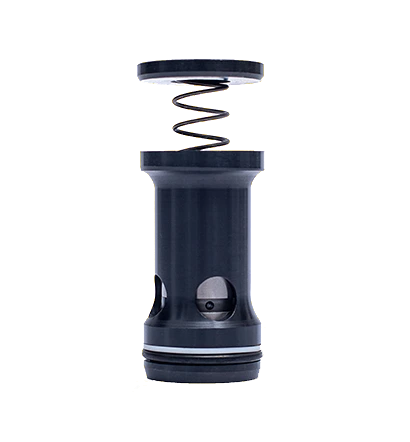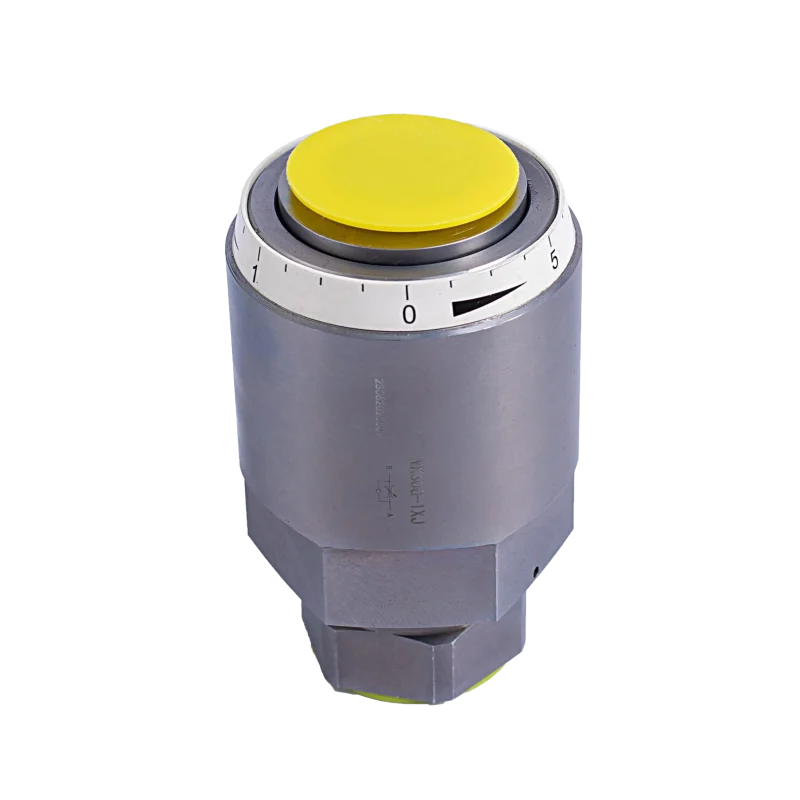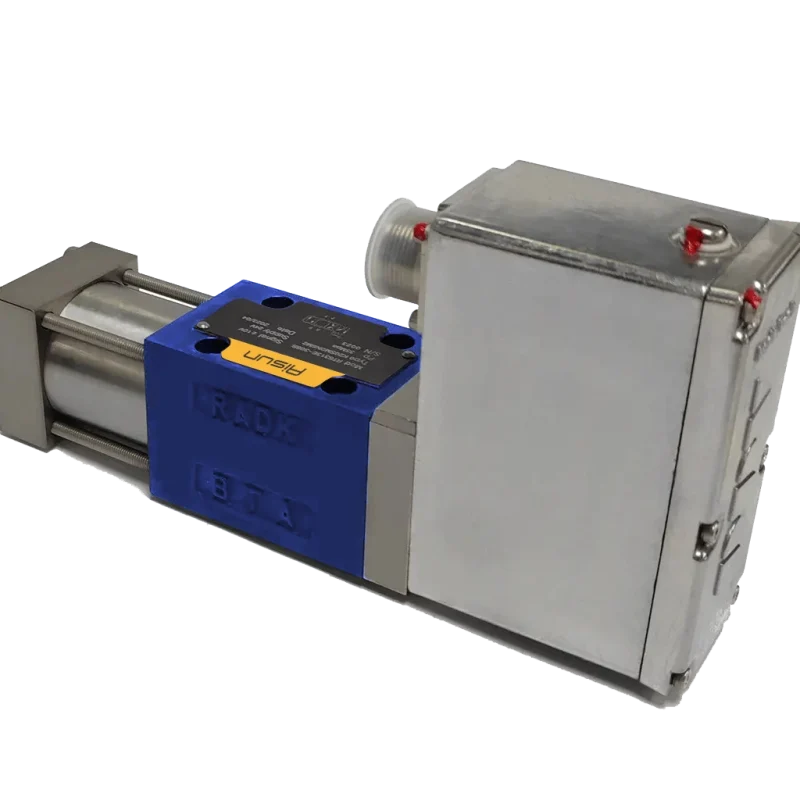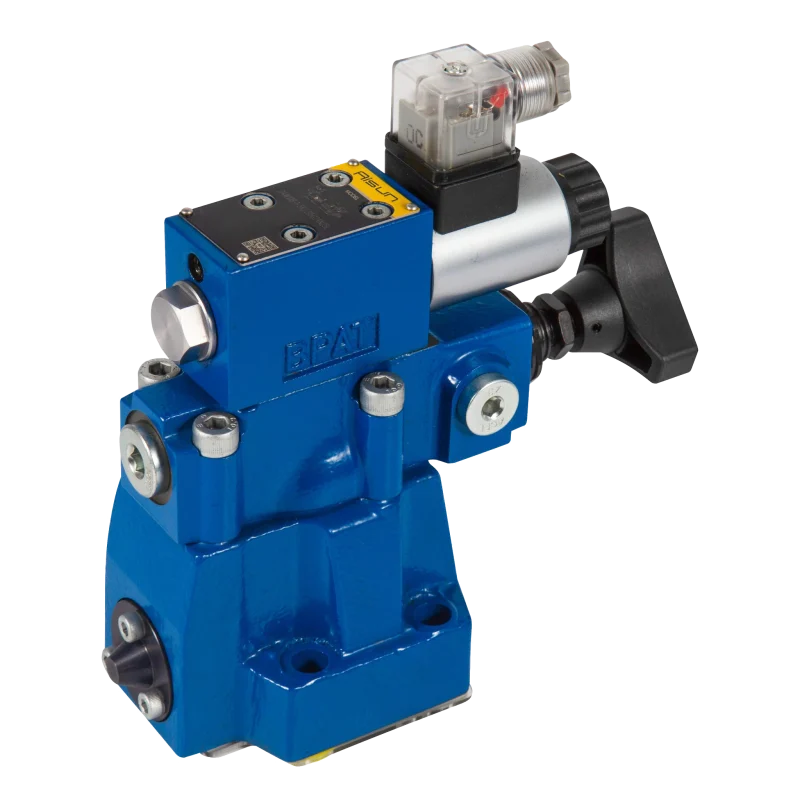hydraulic check valve M-SR
The M-SR hydraulic check valve is a specific type of check valve used in hydraulic systems to control the flow of hydraulic fluid in one direction while preventing backflow in the opposite direction. The designation “M-SR” typically refers to a specific series or design used by particular manufacturers, but the general function of the valve remains consistent across different applications.
- Basic Function of the M-SR Check Valve:
- A check valve is a non-return valve, meaning it allows fluid to flow in one direction and automatically blocks flow in the opposite direction.
- In hydraulic systems, check valves are essential for preventing backflow that could cause damage or inefficiency, and they also help maintain system pressure.
- M-SR Check Valve Design:
The M-SR check valve typically consists of the following components:
- Valve Body: The main housing that holds the internal components, such as the ball or poppet.
- Poppet or Ball: The internal moving element that blocks or allows flow. When fluid is flowing in the allowed direction, the poppet or ball is pushed away from the valve seat, allowing fluid to pass. When the flow reverses, the poppet or ball is pushed against the seat, blocking the reverse flow.
- Spring (optional): Many check valves, including the M-SR type, feature a spring that helps close the valve when there is no flow or when the flow reverses. The spring applies pressure to the poppet or ball, ensuring it seals tightly against the valve seat.
- Ports: There are typically two ports: an inlet (P) and an outlet (T or A/B depending on the system).
- Features of the M-SR Check Valve:
- Unidirectional Flow: Like other check valves, the M-SR valve ensures that fluid flows in only one direction, preventing backflow that could affect system performance, damage components, or cause contamination.
- Spring-Loaded or Non-Spring: Many M-SR check valves have a spring-loaded mechanism. The spring provides resistance to reverse flow, ensuring that the valve automatically closes when there is no pressure or when flow reverses direction.
- Quick Response: M-SR valves are designed for fast and reliable response to changes in flow direction, allowing them to close immediately when reverse flow is detected.
- Compact Design: These valves are often designed in a compact form factor, making them easy to integrate into tight spaces within a hydraulic system.
- Operation of the M-SR Check Valve:
The M-SR check valve operates based on differential pressure:
- When fluid flows in the permitted direction, the pressure differential causes the poppet or ball inside the valve to lift or move away from the valve seat, allowing fluid to pass through.
- If the fluid tries to flow in the reverse direction, the poppet or ball is pushed back against the seat (usually by a spring), blocking the flow and preventing backflow.
This mechanism ensures that the hydraulic system operates safely, as the valve only allows flow in the intended direction.
- Applications of the M-SR Check Valve:
The M-SR check valve is commonly used in various hydraulic systems and machinery, including:
- Hydraulic Power Units: To prevent backflow and maintain system pressure within a hydraulic power unit (HPU).
- Hydraulic Cylinders: To prevent the backward movement of a hydraulic cylinder, ensuring it does not extend or retract unintentionally due to pressure loss or flow reversal.
- Hydraulic Motors: In motor circuits, the check valve prevents reverse flow, protecting the motor from damage.
- Circuit Protection: In systems where a one-way flow is critical (e.g., in pressure relief circuits or accumulator charging), check valves like the M-SR ensure that fluid moves only in the correct direction.
- Mobile and Industrial Equipment: Common in excavators, loaders, and other machinery that require secure flow control to actuators and hydraulic motors.
- Key Advantages of the M-SR Check Valve:
- Prevents Backflow: The primary function of the M-SR valve is to prevent reverse flow, which can cause damage to the system or lead to operational inefficiencies.
- Maintains System Integrity: By ensuring fluid flows only in one direction, it helps maintain the proper functioning of hydraulic circuits, reducing the likelihood of malfunctions or wear.
- Compact and Easy to Install: The design of the M-SR check valve makes it easy to integrate into a variety of systems without taking up much space.
- Cost-Effective: As a simple but critical component, check valves like the M-SR are cost-effective solutions for controlling flow in hydraulic systems.
- Considerations When Using the M-SR Check Valve:
- Pressure Settings: The pressure differential required to open and close the valve must match the system’s operating conditions. If the spring in the valve is too strong or too weak, it could cause the valve to operate improperly.
- Flow Rate: The M-SR check valve must be chosen based on the flow rate requirements of the system. An incorrectly sized valve can result in restricted flow or insufficient sealing against reverse flow.
- Installation Location: Proper installation is essential for the check valve to function effectively. It must be placed in the right part of the circuit, with the correct orientation (inlet and outlet ports) to ensure it allows fluid flow in the intended direction.
- Wear and Maintenance: Like all hydraulic components, the M-SR check valve requires regular maintenance, particularly in systems with high cycle rates or where contamination might wear the poppet or ball, affecting the sealing and performance of the valve.
The M-SR hydraulic check valve is a critical component in hydraulic systems designed to ensure unidirectional flow, prevent backflow, and protect system integrity. It is especially useful in preventing unwanted flow reversals that could lead to damage, leakage, or loss of pressure. With its simple, reliable design and fast response, it is widely used in mobile machinery, industrial equipment, and hydraulic power units, ensuring the safe and efficient operation of the system.
Plug-in check valve M-SR
Plug-in check valve M-SR
The primary function of a check valve in a hydraulic system is to allow fluid to flow in one direction only while blocking the flow in the opposite direction.
When fluid enters through port p1, the pressure at p1 overcomes the pressure at port p2 acting on the valve core, along with the spring force and friction between the valve core and the valve body, pushing the valve core open and allowing fluid to flow from p1 to p2, achieving forward flow. Conversely, when pressure oil enters from port p2, the valve core is pressed tightly against the valve seat by the combined action of the liquid pressure at p2 and the spring force, blocking the fluid flow and achieving reverse flow cutoff.
Features:
- Size 8 to 30
- Maximum working pressure 315 bar
- Maximum working flflow 400 L/min
- Insert into the manifolds blocks
- Reverse closing without leakage
- 6 optional cracking pressure





